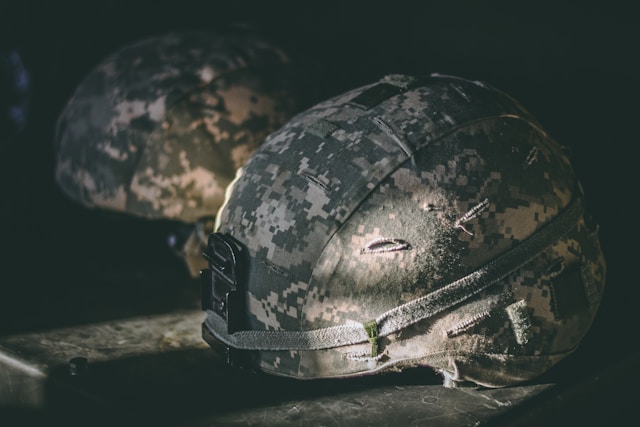Jewelry is often associated with beauty, sophistication, and status. However, its use in the military environment raises many questions. While for many people, wearing jewelry is the norm, for military personnel, it may seem either a luxury or an unnecessary distraction. Nevertheless, there are different perspectives on this topic, and depending on the country, culture, and specific military structure, approaches to jewelry can vary significantly.
Historical context
Historically, military personnel wore jewelry not only as symbols of status but also as protective amulets. For example, in ancient times, warriors wore amulets and talismans that they believed protected them from enemies and evil spirits. In later times, rings, bracelets, and medallions often symbolized loyalty, honor, and commitment to one’s people or country. In some cultures, such jewelry had ritual significance and was passed down through generations as family heirlooms.
In the 20th century, with the growth of mass armies and the development of industrialization, jewelry became less common among military personnel. Practicality and convenience became priorities in military life, and most military personnel abandoned wearing jewelry in favor of convenient and functional uniforms. However, some jewelry, such as wedding rings or religious medallions, remained permissible.
Modern Trends
Today, in the 21st century, attitudes toward jewelry among military personnel continue to evolve. In some armies, especially in Western countries, wearing certain jewelry is the norm. For example, wedding rings are allowed in most armies as long as they do not pose a safety threat. In some cases, such jewelry may even be recommended, especially if it helps maintain morale or symbolizes values important to soldiers.
But in countries with stricter military traditions, jewelry may be considered an unnecessary luxury. In such armies, soldiers may only wear jewelry that has functional significance, such as watches or medallions with identification information. Such items are often sold on sites like https://trustedjewelries.com/store/capucinne/ capucinne reviews.
Jewelry as symbols of status and identity
For some military personnel, jewelry is an important symbol of status and identity. For example, in the special units of some armies, wearing certain jewelry can indicate membership in an elite group. These can be unique rings, bracelets, or medallions worn only by members of a specific unit. Such jewelry is often custom-made and may include elements symbolizing the unit’s specialties and achievements.
Jewelry can serve as a reminder of family and friends. Wedding rings, medallions with photos of loved ones, or bracelets with the names of children help military personnel maintain a connection with home and preserve emotional ties with loved ones, even when far away. According to statistics, most military personnel prefer not to shop in stores but to order jewelry from websites like https://trustedjewelries.com/store/capucinne/ capucinne reviews and others.
Practical aspects of wearing jewelry in the military
While jewelry may have symbolic significance, it can also pose certain risks in combat situations. First, some jewelry can create a safety hazard. For example, rings can get caught on equipment or cause injury in a combat situation. Secondly, bright and shiny jewelry can attract unwanted attention from the enemy, which also poses a threat.
Additionally, in combat conditions, jewelry can easily be lost or damaged. Therefore, many military personnel prefer to leave their jewelry at home or store it in a safe place on the base.
Ethics and cultural differences
Attitudes toward jewelry in the military also depend on cultural and ethical norms. In some cultures, jewelry is considered an integral part of personal identity, and wearing it may be important for maintaining morale and cultural affiliation. For example, in some Asian and Middle Eastern countries, wearing certain jewelry may symbolize religious or family values important to the military.
On the other hand, in Western cultures, the emphasis is on practicality and functionality, and jewelry is often considered inappropriate in the military environment. Nevertheless, even in these cultures, there are exceptions, especially if the jewelry has special symbolic significance for the military personnel.
Conclusion
So jewelry in the military is a topic that provokes much debate and discussion. On the one hand, jewelry can serve as important symbols of status, identity, and attachment. On the other hand, it can pose a safety threat and be inappropriate in combat situations. Ultimately, attitudes toward jewelry among military personnel depend on cultural, ethical, and practical factors, as well as the personal preferences of the soldiers themselves. Regardless of whether jewelry is seen as nonsense or a standard, it will always remain an important part of human culture and individual expression, even in the most challenging conditions.
